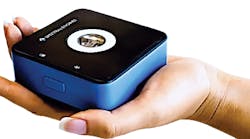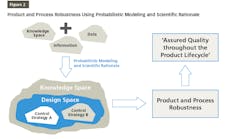It’s time to take a fresh look at Q2 (R1) (Step 4 incorporated 11/05). Considering that the PAT Guidance wasn’t official until 2004, assume the ICH participants didn’t consider it when writing the Q2 document because it does not consider spectroscopic methods. Perusing the PAT/QbD literature we see that the majority of monitoring/control technologies are spectroscopic (i.e., NIR, LIF, and Raman). PAT groups must improvise when validating a process analysis. In many cases, not a huge burden, but several metrics are not based on current practices.
1. Limit of Detection (LOD). Designed for stability analyses where HPLC excels. In a production setting, where API may be at the 10-40 percent level (w/w), this is unnecessary because trace materials are not being sought.
2. Limit of Quantification (LOQ). Based on LOD, it’s not a viable parameter for process samples. Because PAT is used for production samples, API usually only varies between 95-105 percent.
3. Linearity. Based on calibration solutions for HPLC with a range of (usually) 50 to 150 percent of label claim, a Beer’s law plot results with a correlation coefficient of (nearly) 1.0, slope of 1.0, and an intercept of 0.0. Spectroscopic methods have problems with this approach:
a. Production samples are seldom in solution possessing physical and chemical differences affecting spectra.
b. Calibration curves seldom obey Beer’s law because they are the result of comparing values generated by the reference method to values generated by the spectroscopic method.
4. Accuracy. Similar to the HPLC concept where some mathematical model is used and resultant statistic determines how close to a reference value experimental value is. Again, the reference is not a carefully weighed-out pure API in a volumetric flask, but the result of a primary method, with its own analytical error.
5. Precision. This is easily determined and there are a number of limit tests, based on the standard deviation of the methods used for calibration.
6. Robustness. In a chromatographic assay, the temperature, flow rate, and solvent composition(s) may be varied to show the “design space” of the method, thus its robustness. In a spectroscopic method, the powder and/or the tablet/capsule are intact, dry materials. There is a negligible effect from temperature, no solvents, and no changes in flow rate. If the samples are examined in a lab setting, the sample may be removed from the unit and replaced and/or rotated to a different position.
7. Specificity. This is based on HPLC and is different from spectroscopic methods. Because the API spectrum is not stand-alone (as with an HPLC peak), consider other metrics: the wavelength(s) used in the equation either increase or decrease in a linear fashion with higher or lower API content; there are clear markers in the mixed spectrum that resemble the API; or, as a last resort, a secondary (extraction) method may be used to verify the result.
8. Range. This is saved for last, because it is the most contentious. The suggested ranges for Assay (80-120% of label) and Content Uniformity (75-125% of label) are based on “recovery” values for HPLC. No dosage forms are made, just powders weighed into volumetric flasks, solvents poured in, and the flasks shaken. The APIs are extracted and analyzed via HPLC.
For spectroscopic analyses of final dosage forms, the tablets/capsules are measured “as is.” For wide range of API content, mixtures of excipients and API(s) are prepared. Since all physical attributes affect the spectra, the density, hardness, weight, etc., changes due to large variances may cause difficulties in calibration.
A Risk Assessment approach may be useful. Another approach might be the Durbin-Watson statistic, calculating either “non-linear” or “not non-linear” results. The range of calibration samples might be based on “risk.” If percent API is a low, synthetic tablets from 75-125 percent would have similar physical characteristics and likely viable. Higher percentage API products would have better blending properties for instance. The risk of not using the Guideline as written can be assessed in a manner similar to Risk Analysis for a DoE in a QbD program; until Q2 is updated, the burden of proof is on the analyst.




